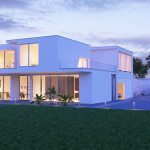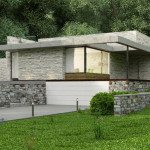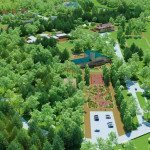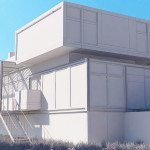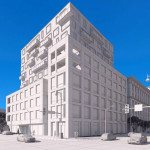3D rendering services for private architects and architectural companies
3D rendering for architects has become a cornerstone of the design and presentation process in the architecture industry. It allows architects, designers, and clients to visualize a project before it’s built, ensuring that the design meets the client’s expectations and adheres to the specific requirements. Moreover, 3D renderings can be a persuasive tool when presenting a design to stakeholders, as it helps them envision the final outcome.
Here’s a primer on 3D rendering for architects:
- Why it’s Important:
- Visualization: Allows clients and stakeholders to visualize the end result without needing to interpret complex architectural drawings.
- Decision Making: Makes it easier to decide on materials, colors, and design elements.
- Marketing: Enables architectural firms to showcase their designs attractively to win bids and attract clients.
- Types of Architectural Renderings:
- Exterior Renderings: Showcase the outside of a building.
- Interior Renderings: Display the design and feel of inside spaces.
- Aerial Renderings: Offer bird’s-eye views of a property or urban design.
- Cross-Section Renderings: Show a sliced view of a structure.
- Virtual Tours: Interactive 3D or 360° views that allow viewers to navigate through a space.
- Software Tools:
- Modeling Software: Tools like AutoCAD, SketchUp, Rhino, and Revit to create detailed 3D models.
- Rendering Software: V-Ray, Lumion, Corona Renderer, and Enscape are popular tools that transform models into detailed and realistic visuals.
- Post-production: Adobe Photoshop or similar software can be used to enhance renders, add context, or integrate renderings into real-life photographs.
- Rendering Techniques:
- Photorealistic Rendering: Aims to replicate real-life details, textures, lighting, and materials.
- Non-photorealistic Rendering (NPR): Often stylized or abstract, it can be useful for concept presentations or when a unique aesthetic is desired.
- Real-time Rendering: Allows for immediate visual feedback and interactive exploration, often used in VR (Virtual Reality) walkthroughs.
- Workflow:
- Model Creation: Develop a detailed 3D model in architectural software.
- Texturing and Materials: Apply textures, colors, and materials to surfaces.
- Lighting: Set up artificial and natural lighting to achieve desired ambiance.
- Rendering: Use dedicated software to generate the final visual.
- Post-processing: Enhance the render in image editing software.
- Trends and Future:
- Virtual Reality (VR) and Augmented Reality (AR): Allow clients to immerse themselves in the designed space.
- Artificial Intelligence: AI-driven tools can optimize lighting, suggest designs, and speed up rendering processes.
- Cloud Rendering: Use cloud-based services to render images faster by leveraging powerful remote servers.
- Interactive Presentations: More than static images, the future holds interactive presentations where clients can change materials, colors, or even the design on-the-fly.
Here’s a brief overview of the 3D rendering process for architects and some tips and tricks:
- Modeling:
- Software Choices: Popular software options include Autodesk Revit, Rhino, SketchUp, and ArchiCAD. The choice often depends on the complexity of the design and the desired output.
- Model Details: Start with basic shapes and gradually add details such as windows, doors, and other architectural elements.
- Texturing & Materials:
- Use realistic materials to give surfaces the look of wood, metal, glass, concrete, etc. This is crucial for achieving a lifelike rendering.
- High-quality texture maps can add significant realism. Consider using displacement or bump maps to add depth and texture to surfaces.
- Lighting:
- Use both natural and artificial light sources.
- Consider the time of day and the geographic location of the project to simulate accurate sun angles.
- For interiors, think about how light will interact with materials and spaces.
- Camera & Composition:
- Choose camera angles that best represent the design intent.
- Consider using perspective correction to avoid distorted vertical lines, especially for tall buildings.
- Rendering:
- Software Choices: Rendering software like V-Ray, Lumion, Corona Renderer, or Enscape can be used. The choice often depends on the desired output and the compatibility with the modeling software.
- Settings: Play with settings for shadows, reflections, and refractions. Optimal settings will often require some experimentation based on the scene and desired output.
- Post-Processing:
- Software like Adobe Photoshop can be used to refine the image, adjust colors, add people or vegetation, and give the final touches to the rendering.
- This step can help in enhancing the atmosphere and mood of the rendering.
- Virtual Reality & Augmented Reality:
- As technology evolves, architects can also utilize VR and AR to create immersive experiences for clients, allowing them to virtually “walk-through” the design.
Tips:
- Reuse & Modularize: Once you’ve created certain elements (like specific types of windows or furniture), save and reuse them in other projects to save time.
- Stay Updated: The world of 3D rendering is ever-evolving, with new tools and techniques emerging regularly. Attend webinars, workshops, and courses to stay updated.
- Render in Sections: For large projects, consider rendering in sections or layers. This way, if a change is required in one section, you won’t need to re-render the entire scene.
In conclusion, 3D rendering for architects offers a powerful means to convey design intent, solicit feedback, and ensure that a project meets the requirements and expectations of all stakeholders. As tools and techniques continue to evolve, the potential for even more lifelike and immersive presentations will only grow. Incorporating 3D rendering into an architectural practice can lead to more effective communication, faster approval processes, and a stronger market presence. It’s vital for modern architects to familiarize themselves with this technology and its best practices.
The architectural industry has developed significantly throughout the past couple of decades with great achievements in architectural rendering (also known as 3D rendering). This technique is used by architects to create 2D and 3D layouts for preliminary architectural designs.
With the help of state-of-the-art rendering software, designs are converted into visual digital formats. This kind of virtual representation is of great use to architects, contractors, and their clients. 3D rendering also offers a lot of advantages over traditional designs.
For most architectural firms, the cost of maintaining the hardware, software and the cost of training makes it unaffordable to produce photo-realistic 3D architectural renderings in-house. This problem is solved when you use our services for your 3D architectural renderings. Vrender is a creative firm specializing in architectural visualization and therefore solving the problem of architectural visualization.
Architectural firms of different sizes that know the value of time, quality and resources outsource all their 3D visualization and architectural rendering to us because they trust us to deliver the best. More property developers have also recognized the need to help their architects make the choice of spending more time on tasks such as design direction instead of working on architectural rendering using old and ineffective hand-drawn technique.
This has helped to improve the relationship between developers and architect speeding up the overall production process. This will also help you to save cost without any effect on the outcome of your project.
A photo-realistic style architectural rendering surely has a positive impact on every decision maker. This is because modern developers want professional visualizations that are effective in achieving their sales and marketing goals.
Architectural renderings were done as 3D visualization are not that expensive these days. They are much more within reach than professional watercolor renderings. There has been an explosion of computer renderings and architectural virtual walk-through tours in the current decade that we can only expect more growth in the number of architectural firms and property developers who will benefit from what architecture rendering industry has to offer today. This is because every developer, architect, and designer wants to make life much easier on every project.
Architectural companies develop projects in several stages. When an architectural project is conceived, a technical assignment is then created and the next step is the development of the planning process. The main development of the architectural project is based on planning decisions and constructional-engineering schemes of the structure. The last stage of project development widely uses 3D visualization capabilities.
With 3D visualization, you can create a comprehensive model of the architectural objects and the visual illustrations of all stages of development which can be presented to your clients. It is an efficient and easy way to show the workflow and expected result in an attractive way.
In building projects and houses, a 3D model gives the complete picture of the best positioning of integral components of the exterior such as playgrounds, parking lots, shops, etc. Architectural 3D visualization provides ample opportunities to demonstrate effective solutions to developers and architects.
Architectural companies are using the capabilities of rendering to produce presentation materials of high quality which can be used for advertising purposes and in attracting investors. High-quality 3D rendering helps architects in crosschecking architectural solutions which in turn will lead to the expansion of its customer base.

